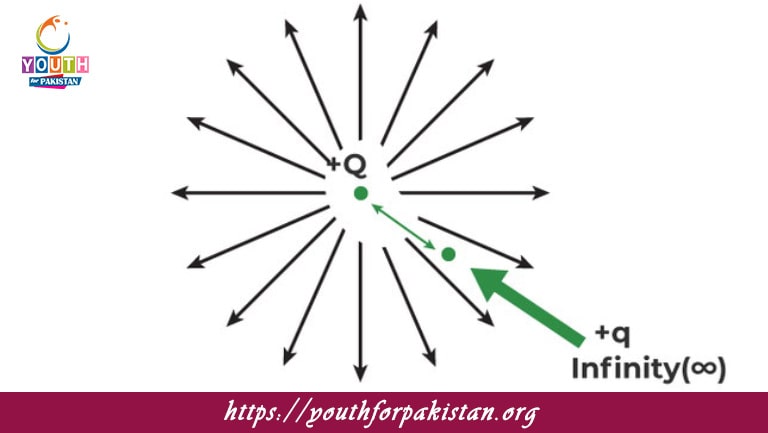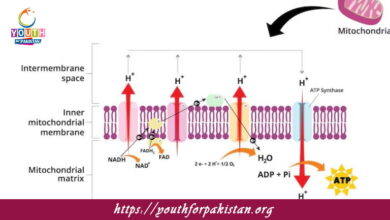Electric Potential MDCAT MCQs with Answers

Welcome to the Electric Potential MDCAT MCQs with Answers. In this post, we have shared Electric Potential Multiple Choice Questions and Answers for PMC MDCAT 2024. Each question in MDCAT Physics offers a chance to enhance your knowledge regarding Electric Potential MCQs in this MDCAT Online Test.
Electric Potential MDCAT MCQs Test Preparations
Electric potential is defined as:
a) Work done per unit charge
b) Force per unit charge
c) Power per unit charge
d) Energy per unit charge
The SI unit of electric potential is:
a) Volt
b) Ampere
c) Ohm
d) Joule
Electric potential at a point is a:
a) Vector quantity
b) Scalar quantity
c) Neither scalar nor vector
d) Depends on the situation
The electric potential due to a point charge decreases with:
a) Increasing distance
b) Decreasing distance
c) Increasing charge
d) Decreasing charge
The potential difference between two points is defined as the:
a) Product of charge and distance
b) Work done in moving a unit charge between them
c) Force experienced by a unit charge
d) Energy required to maintain the charge
Which of the following devices measures electric potential difference?
a) Ammeter
b) Voltmeter
c) Galvanometer
d) Ohmmeter
The electric potential at a distance of 1 meter from a charge of 1 Coulomb in vacuum is:
a) 9 x 10^9 V
b) 1 V
c) 9 V
d) 1.6 x 10^-19 V
If the electric potential at a point is zero, the electric field at that point:
a) Must be zero
b) Cannot be zero
c) Can be non-zero
d) Cannot be determined
The work done in moving a charge between two points is zero if:
a) The points are equidistant from the source charge
b) The points are at different potentials
c) The electric field is uniform
d) The electric potential difference is zero
The electric potential at the center of a uniformly charged spherical shell is:
a) Zero
b) Maximum
c) Uniform
d) Equal to the potential on the surface
Which factor does not affect the electric potential at a point?
a) Magnitude of the charge
b) Distance from the charge
c) Medium surrounding the charge
d) Shape of the charge
The electric potential at a point inside a charged conductor is:
a) Zero
b) Equal to the surface potential
c) Less than the surface potential
d) Cannot be determined
Electric potential due to a dipole at a point on the axial line is:
a) Zero
b) Maximum
c) Inversely proportional to the square of the distance
d) Directly proportional to the distance
The potential difference across the terminals of a battery is:
a) Always zero
b) Always the same as its emf
c) Less than its emf when current flows
d) More than its emf when current flows
A conductor in electrostatic equilibrium has:
a) Zero electric potential inside
b) Non-zero electric field inside
c) The same potential at all points on its surface
d) Zero potential on its surface
The potential difference between two points in a uniform electric field is:
a) Directly proportional to the electric field strength
b) Inversely proportional to the distance between the points
c) Inversely proportional to the electric field strength
d) Directly proportional to the distance between the points
The potential energy of a charge in an electric field is given by:
a) V/q
b) qV
c) q/E
d) qE
The electric potential at infinity is:
a) Zero
b) Infinite
c) Finite
d) Undefined
The electric potential at a point due to a system of charges is:
a) The product of the potentials due to individual charges
b) The vector sum of the potentials due to individual charges
c) The scalar sum of the potentials due to individual charges
d) The difference between the potentials due to individual charges
If a positive charge is moved against the direction of the electric field, its potential energy:
a) Increases
b) Decreases
c) Remains the same
d) Becomes zero
The electric potential at a distance r from a point charge Q in vacuum is:
a) kQ/r
b) kQr
c) kQ/r^2
d) kQr^2
If the electric potential at a point is negative, the charge creating the potential is:
a) Positive
b) Negative
c) Zero
d) Infinite
The electric potential due to a uniformly charged ring at its center is:
a) Zero
b) Maximum
c) Equal to the potential at any point on the axis
d) Equal to the potential at any point on the circumference
The potential difference across a capacitor is proportional to:
a) The charge stored on it
b) The square of the charge stored on it
c) The inverse of the charge stored on it
d) The capacitance
If two points in an electric field have the same potential, the electric field between them:
a) Is zero
b) Is uniform
c) Can have any value
d) Must be positive
The electric potential due to a uniformly charged infinite plane sheet is:
a) Zero
b) Constant at all points
c) Inversely proportional to the distance
d) Directly proportional to the distance
The electric potential difference between two points is zero if:
a) They are at different potentials
b) They are at the same distance from the charge
c) They are in different media
d) They are in a uniform electric field
The electric potential energy of two point charges is:
a) Always positive
b) Always negative
c) Zero if the charges are of the same sign
d) Zero if the charges are of opposite signs
The potential at a point due to a uniformly charged rod is maximum:
a) At the midpoint of the rod
b) At the ends of the rod
c) At infinity
d) At a point equidistant from both ends
Electric potential energy is the energy stored due to:
a) The velocity of the charge
b) The position of the charge in the electric field
c) The acceleration of the charge
d) The mass of the charge
A conductor in electrostatic equilibrium has an electric field:
a) Only on its surface
b) Only inside it
c) Both inside and on its surface
d) Neither inside nor on its surface
The electric potential due to a uniformly charged sphere outside the sphere is the same as:
a) That due to a point charge at its center
b) Zero
c) That due to a line of charge along its diameter
d) That due to a ring of charge around its equator
The electric potential at a point in a dipole field is zero if:
a) The point is on the perpendicular bisector of the dipole
b) The point is on the axial line
c) The point is at infinity
d) The point is midway between the charges
The electric potential due to an electric dipole at a distant point varies as:
a) 1/r
b) 1/r^2
c) 1/r^3
d) 1/r^4
The potential difference between the ends of a conductor carrying a current is due to:
a) The resistance of the conductor
b) The capacitance of the conductor
c) The inductance of the conductor
d) The temperature of the conductor
The electric potential energy of a system of two charges is positive if:
a) The charges are like charges
b) The charges are unlike charges
c) One charge is positive and the other is negative
d) The charges are neutral
The potential energy of a dipole in a uniform electric field is minimum when:
a) It is aligned parallel to the field
b) It is aligned perpendicular to the field
c) It is aligned anti-parallel to the field
d) It is at any arbitrary angle to the field
In an electrostatic field, the work done in moving a charge from one point to another depends on:
a) The path taken
b) Only the initial and final positions
c) The speed of the charge
d) The mass of the charge
The electric potential at a point due to a uniformly charged non-conducting sphere is:
a) Zero everywhere inside
b) Maximum at the surface
c) Maximum at the center
d) Zero at the surface
A potential difference of 12 V is applied across a resistor of 6 ohms. The current through the resistor is:
a) 2 A
b) 0.5 A
c) 12 A
d) 6 A
If you are interested to enhance your knowledge regarding Physics, Chemistry, Computer, and Biology please click on the link of each category, you will be redirected to dedicated website for each category.





